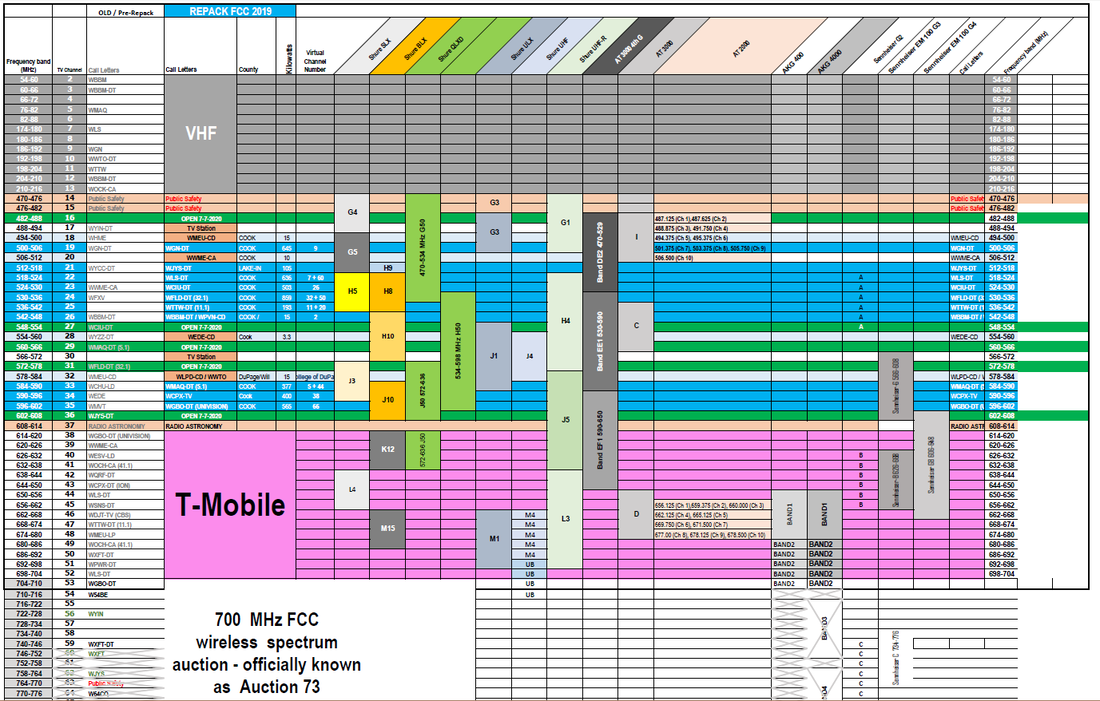|
Now that Phase 6 of the FCC changes have taken place, the Chicago metro area must be ready for the next phase of over the air TV station re-allocations due this summer. What does this mean for wireless microphones? First a bit of history:
This brings us to today: October 18, 2019: Chicago metropolitan area TV station reallocation per Phase 6 of the FCC Digital Transition Schedule https://www.fcc.gov/about-fcc/fcc-initiatives/incentive-auctions/transition-schedule This affects several brands of wireless microphone systems that operate in the range of 494-548MHz. Most notably the Shure SLX and BLX bands H5, H8 and H9 which now have no available spectrum to operate in. Later in 2020: the last Phase of the FCC transition will take place and the only available UHF spectrum will be: TV Channels 16 (482-488MHz), 27 (548-554MHz), 29 (560-566MHz), 31 (572-578MHz) and 36 (602-608MHz) What does this mean? If you have wireless mic systems that operate in the range of a TV station you must move it to a new location. If there are no available stations, you must replace it. Wanting to use more than 4 channels of wireless mics on a budget is going to be impossible going forward. This is because only the higher priced models of wireless can operate many channels in a small amount of RF spectrum. This is bad news for many schools and houses of worship that have come to rely on using 10+ channels of wireless mics for plays and productions. I wish there was a cheap solution to offer, but at this point we are mere pawns in this chess game. The FCC makes the rules, and wireless manufacturers makes changes to accommodate. Can Sound Planning Help? YES! We can work with you to provide the options and solutions to get the right wireless systems in place and operational. For More Information: https://www.fcc.gov/about-fcc/fcc-initiatives/broadcast-incentive-auction/wireless-microphones-and-post-incentive https://www.rfvenue.com/blog/tv-repack-revisited https://www.shure.com/en-US/support/wireless-spectrum https://www.fcc.gov/TVrescan https://www.fcc.gov/about-fcc/fcc-initiatives/incentive-auctions/transition-schedule A great article from Wired Magazine about this in 2018
0 Comments
Your comment will be posted after it is approved.
Leave a Reply. |



